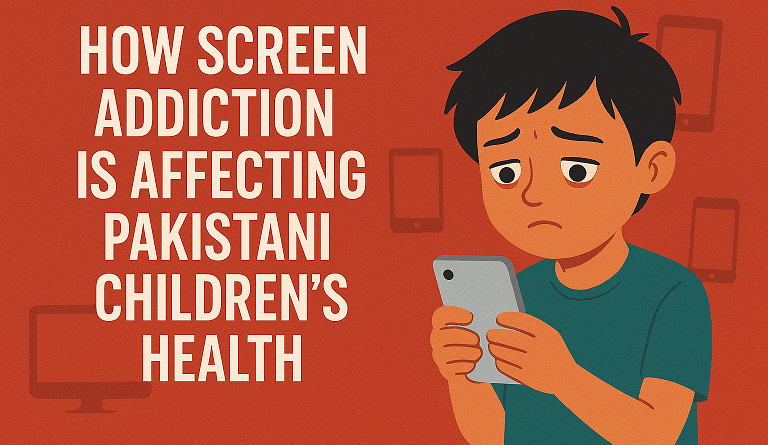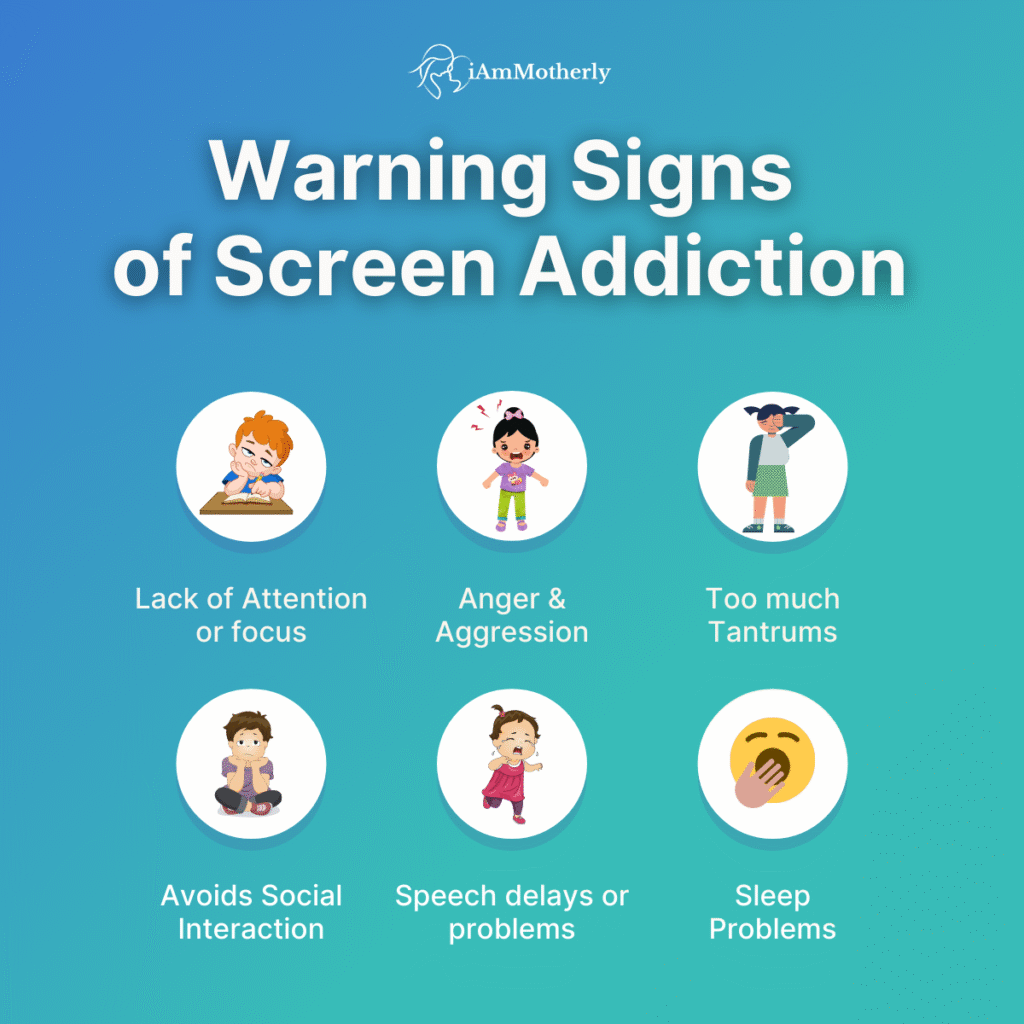How Screen Addiction Is Affecting Pakistani Children’s Health
Introduction
With smartphones, tablets, and educational screens becoming ubiquitous, screen time among children in Pakistan has surged. While technology offers educational opportunities, excessive screen usage is raising serious health, developmental, and behavioral concerns. It’s essential to understand,How Screen Addiction Is Affecting Pakistani Children’s Health, the unique challenges Pakistani children face and offer practical steps that families and educators can take.
1. Early Behavioral and Developmental Impacts
A study conducted in Islamabad on preschoolers aged 3 to 5 found that those using screens for more than 60 minutes daily exhibited significantly higher rates of withdrawal symptoms, sleep disturbances, and autism spectrum-related problems compared to peers with limited screen time (≤60 minutes) PubMed.
Another Lahore-based study compared children with communication behavior disorders to typically developing peers, finding that higher screen exposure correlated with increased restlessness, poor eye contact, and developmental delays pafmj.org.
2. Impact on Academic Performance
Research from Karachi involving children aged approximately 14 years (grades 5–8) showed that daily screen time of one hour or less did not negatively influence school performance PubMed. This suggests that while moderate screen usage isn’t harmful academically, excessive use remains a concern.
A more recent national cross-sectional study reported that children exceeding two hours of daily screen time (ages 2–5) displayed elevated risks of anxiety, attention deficits, and emotional issues by age six Pakistan Today.
An article on warning signs is good depicting the signs from children having bad habbit of excessive screen time – the below picture from “iAmMotherly”
3. Physical Health Consequences
- Sleep Disruption: Screen exposure, especially before bed, suppresses melatonin production and disrupts circadian rhythms. This can lead to delayed bedtime and shorter sleep duration Wikipedia+1.
- Obesity and Sedentary Lifestyle: Higher screen time often replaces physical activity. In Pakistan, approximately 40% of children are overweight or obese—linked in part to sedentary habits and excessive screen usage Wikipedia. Globally, sedentary screen behavior is strongly correlated with obesity, poor motor coordination, and long-term health risks like diabetes and heart disease WikipediaThe Times of India.
4. Cognitive and Social Development
Extended screen use reduces opportunities for parent-child interaction and peer play — key drivers of emotional intelligence and communication skills. This environment may delay language development and weaken problem-solving abilities WikipediaPakistan Today.
Cognitively, excessive screen exposure has also been linked in international studies to thinning in areas of the brain responsible for memory and decision-making, although similar research in Pakistan is still emerging Wikipedia.
5. Local Expert Observations
Dr. Fawad Suleman, Senior Instructor of Psychiatry at AKUH, warns that excessive screen time is replacing vital parent-child interactions—stories, conversations, and emotional exchanges that foster empathy and communication Pakistan Today.
Paediatricians like Dr. Mubina Agboatwalla further note physical issues such as eye strain, posture problems, and headaches in screen-obsessed children. They also report increased irritability and attention difficulties in children with restricted sleep patterns due to late-night screen use stateofchildren.com.
6. Summary of Effects
| Domain | Key Impacts |
|---|---|
| Behavioral & Development | Withdrawal symptoms, restlessness, developmental delays, autism-like traits |
| Academic | Generally unaffected with ≤1 hr/day; decline seen with excessive use |
| Physical Health | Sleep disruption, obesity, posture issues, eye strain |
| Cognitive & Social | Delayed language, reduced attention span, weaker social skills |
| Home Life | Less interaction, emotional disconnect, parenting strains |
7. Practical Recommendations for Pakistani Families
- Follow WHO & AAP Guidelines: Avoid screen exposure for children under 2; limit to 1 hour per day for children aged 2–5 stateofchildren.comPakistan Today.
- Create Screen-Free Routines: No devices at bedtime or during meals to maintain healthy sleep and communication habits Pakistan Today.
- Choose Quality Content: Whenever screen time is necessary, prefer educational programs watched together with discussion and engagement.
- Encourage Physical Activity: Replace screen time with outdoor play, sports, reading, or creative hobbies.
- Model Good Habits: Parents limiting their own screen use can set a healthy example.
Conclusion
Screen time is a double-edged sword: while it connects and educates, it can also disrupt sleep, hinder development, and burden health—particularly when unregulated. For Pakistani children, whose lives are embedded within close-knit families and cultural traditions, the stakes are even higher. By balancing technology use with meaningful interaction, physical activity, and structured limits, we can ensure that children grow in a healthy, connected, and resilient way. Although multiple studies/forums/blogs are available on internet but we are still need to learn that “How Screen Addiction Is Affecting Pakistani Children’s Health”, there is a huge gap yet pending to cover up.
For reading our other Article on Social Messages please click on ![]()


